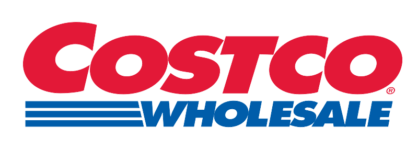
Homemade Soap Recipe with Shea Butter and Coconut Oil
Creating your own soap at home can be a fun and rewarding experience. Not only do you get to customize the ingredients to suit your skin's needs, but you also have the satisfaction of crafting something from scratch. In this article, we will guide you through a simple soap recipe using shea butter and coconut oil, highlighting the benefits of these ingredients and answering common questions about soap making.
Shea butter is a natural fat extracted from the nuts of the shea tree. It's known for its moisturizing properties and is rich in vitamins A, E, and F. When used in soap, shea butter helps to hydrate the skin, making it ideal for those with dry or sensitive skin. Additionally, it provides a creamy lather, enhancing the overall bathing experience.
Coconut oil is another popular ingredient in soap making. It contributes to a fluffy lather and offers excellent cleansing properties. However, it's important to use it in moderation, as too much coconut oil can lead to dryness. When balanced with other oils, coconut oil can help create a well-rounded soap that cleanses without stripping the skin of its natural moisture.
To make your homemade soap with shea butter and coconut oil, you will need the following ingredients:
Before you start, ensure you have the following equipment:
Set up your area and gather all your ingredients and equipment. Make sure to wear gloves and goggles for safety, as you will be working with lye, which is caustic.
Using the digital scale, measure out the olive oil, coconut oil, shea butter, lye, and filtered water. It's essential to be accurate with your measurements to ensure the soap saponifies correctly.
In a well-ventilated area (preferably outdoors), slowly add the lye to the water (never the other way around) while stirring gently. This mixture will heat up and create fumes, so be cautious. Allow it to cool to around 100-110°F (37-43°C).
In a separate pot, combine the olive oil, coconut oil, and shea butter. Heat gently until melted, then remove from heat and let cool to the same temperature as the lye solution.
Once both the lye solution and oils are at the appropriate temperature, carefully pour the lye into the oils. Use the immersion blender to mix until you reach "trace," which is when the mixture thickens and leaves a trail on the surface.
If you wish to add fragrance, now is the time to mix in your essential oil. Stir gently to combine.
Pour the soap mixture into your prepared soap mold. Tap the mold gently on the counter to remove any air bubbles.
Cover the mold with a towel to keep it warm as it saponifies. After 24 hours, remove the soap from the mold and cut it into bars. Allow the bars to cure in a well-ventilated area for at least 4-6 weeks before using.
Yes, making soap at home can be safe if you follow proper safety precautions. Always wear gloves and goggles when handling lye, and work in a well-ventilated area.
Absolutely! You can adjust the oils and add different essential oils for fragrance. However, be cautious with the proportions to ensure proper saponification.
Soap should cure for at least 4-6 weeks. This allows it to harden and become milder for use.
Making your own soap with shea butter and coconut oil is not only enjoyable but also allows you to create a product that is tailored to your skin's needs. With just a few ingredients and some careful preparation, you can produce beautiful, fragrant bars of soap that are perfect for personal use or as gifts. So gather your supplies and start your soap-making journey today!
Shea butter is a natural moisturizer rich in vitamins A, E, and F. It hydrates the skin and provides a creamy lather, making it ideal for those with dry or sensitive skin.
Coconut oil adds a fluffy lather and excellent cleansing properties to soap. However, it should be used in moderation to avoid dryness, especially when balanced with other oils.
You will need olive oil, coconut oil, shea butter, lye (sodium hydroxide), filtered water, and optional essential oils for fragrance. Accurate measurements are crucial for proper saponification.
Homemade soap should cure for at least 4-6 weeks. This curing time allows the soap to harden and become milder, making it safe and effective for use.

Shea Butter vs Coconut Oil for Hair: Which is Better?
When it comes to hair care, natural oils and butters have become increasingly popular for their moisturizing and nourishing properties. Among these, shea butter and coconut oil are two of the most widely used. But how do they comp...

Delightful Coconut Butter Cookie Recipe: A Sweet Treat for Everyone
Coconut butter has become a popular ingredient in many kitchens due to its rich flavor and creamy texture. Not only is it a delicious alternative to traditional butter, but it also adds a unique tropical twist to baked goods. In t...

Coconut Butter: Understanding Saturated Fat in Butter vs. Coconut Oil
Coconut butter has gained popularity as a versatile ingredient in cooking and baking, often touted for its health benefits. However, when comparing coconut butter to traditional butter and coconut oil, a common question arises: ho...

Coconut Oil vs. Butter for Cannabutter: Which is Better?
When it comes to infusing cannabis into edible products, two popular options stand out: coconut oil and butter. Both have their unique characteristics and applications, making them suitable for different culinary needs. In this ar...
Ready to source an ingredient?
Whether you’re struggling to find the perfect ingredient, racing against the clock, or simply don’t have the bandwidth to manage sourcing — we’ve got your back.
Get a Free Sourcing AuditSavings is BIG but the relationship value is MASSIVE! Glad we met when we did. Looking forward to building this partnership with you and David.
Yohan, here to say you’re one of my favorite suppliers. Aside from your high quality ingredients, you’re so great to work with. Thanks for all the help you’ve given us this year.
Working with Global Savors and Yohan has been very smooth when sourcing ingredients. They offer a great selection and and cost savings! Yohan has been awesome to work with and we look forward to continuing business together.






Global Savors is your trusted partner for seamless ingredient sourcing, offering end-to-end solutions that streamline procurement, simplify logistics, and elevate your supply chain efficiency.
View More News
© 2025 Copyrights by Global Savors. All Rights Reserved

